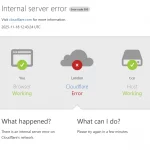SMF Report Warns 2025 Gigabit Broadband Target to be Missed UPDATE

A new report from the Social Market Foundation (SMF), which is a British cross-party think-tank, has warned that the Government is “unlikely to meet its target” of deploying gigabit-capable “full fibre to the premises” broadband to all by the end of 2025 without “significant policy reform.”
Before we get started it’s important to highlight that the report was sponsored by TalkTalk, although the SMF claims to retain full editorial independence, at least with respect to its research. One other issue is that it focuses on the delivery of “full fibre” by 2025, although we note that the Government has actually adopted a more technologically neutral approach on its £5bn plan for “gigabit-capable broadband” by the end of 2025 (here).
At present over 27% of the UK (c.8 million premises) can already access a gigabit-capable (1000Mbps+) fixed broadband service via either a “full fibre” (FTTP) or cable DOCSIS 3.1 network, but if you were to only look at FTTP coverage then it’s more like 17% today (here).
Advertisement
Meanwhile the Government’s £5bn investment is actually intended to focus on the final 20% of the hardest to reach premises (e.g. rural), which is on the assumption that the industry will do the rest (i.e. the first 70-80%). Indeed that last point isn’t unreasonable, particularly when you consider that Virgin Media’s upgrade to DOCSIS 3.1 alone will benefit 16 million premises (over half of the UK) by the end of 2021 or a bit later.
However, SMF’s report suggests that a number of obstacles may hamper the Government’s plan, such as the high cost of conducting street works, the negative impact of removing the old copper services (e.g. higher prices and a lack of replacement solutions for older systems, such as alarms), any “insufficient safeguards” in Ofcom’s regulatory framework (i.e. to prevent abuse by Openreach) and a lack of focus on the need to stimulate demand.
Many of these are issues that other network operators and ISPs in the industry would agree with, although SMF’s report also takes a position against Ofcom’s current regulatory approach – particularly with respect to Openreach (BT) – that sounds a bit more like something that plays to TalkTalk’s own vested interests (example).
SMF’s Key Concern – Regulation
We are concerned that the future regulatory framework set out by Ofcom will provide insufficient safeguards for UK consumers going forward. Ofcom is proposing to ease charge controls in areas where it deems there is “potential” for network competition to emerge. However, the potential for competition does not guarantee the emergence of competition in an area, meaning that price controls could be lifted prematurely.
Further, the number of infrastructure providers in an area is a poor gauge of underlying retail competition in the broadband market and likely impacts on consumer outcomes. Consumer switching rates in the broadband market remain low, suggesting a high proportion of disengaged consumers. Such a market lends itself to poor consumer outcomes, where consumers are unlikely to switch provider even in the face of price rises. There are thus clear risks from price deregulation that occurs prior to competition being established.
The easing of wholesale price controls for Openreach has been justified on the basis that this will support higher levels of investment in the infrastructure needed to achieve greater full fibre penetration. However, a number of internet service providers have argued that this might undermine competition in the broadband market. This could occur if the easing of price controls leads to higher retail broadband charges from companies other than BT that use the Openreach network. With BT and Openreach owned by the same parent company, BT’s broadband charges could be kept down, hindering the ability of other firms to compete and gain market share.
As usual, for Openreach, it’s often a case of damned if you do, damned if you don’t. The operator recently announced an ambition to invest £12bn in order to cover 20 million UK premises with a gigabit-capable Fibre-to-the-Premises (FTTP) network by around the mid to late 2020s (i.e. 2025 to 2030). Ofcom’s regulation has thus been adjusted to give them a fair bet on making that sort of commitment.
Advertisement
Some of this may involve the need to charge higher wholesale prices for some services (partly to reflect the fact that deploying FTTP is extremely expensive), which is of course something that Openreach’s ISP customers (TalkTalk, Sky Broadband etc.) would rather they didn’t have to pass on to consumers. The catch is that without such changes it would be difficult for the operator to deploy FTTP as far as they’re currently planning to do.
On the flip side alternative network providers, which are building rival infrastructure to Openreach, would be only too happy if the operator kept prices high and didn’t overbuild their FTTP deployments. In a market this competitive, Ofcom cannot please everybody.
Tristia Harrison, CEO of TalkTalk, said:
“When the Prime Minister promised this time last year gigabit connectivity for everyone by 2025, we were front of the queue to applaud him.
The problem is this target is in serious danger of being missed. Investment into Britain’s full fibre rollout is critical. But it’s got to be affordable – people cannot be forced to pay higher prices just to increase the profits for those building the network.
So TalkTalk is asking the Government and Ofcom to make sure that competition thrives and that prices are fair for hard-pressed Britons. It cannot be right that hospitals will end up paying thousands of pounds more for their broadband when economic times are tough.”
Scott Corfe, SMF Research Director, said:
“Delivering the rollout of full-fibre broadband fairly and quickly is hugely important for the UK economy, and all the more so because of pandemic restrictions that have left so many of us working and socialising online.
The 2025 target is extremely ambitious, and the UK still has a mountain to climb to reach it. Getting there will require some radical changes, especially in how the public sector uses its huge buying power to support demand for broadband and offer the industry some certainty that funding new networks will pay off.
To keep the Prime Minister’s bold promise of connecting every household in the country by 2025, minsters should look to the example of New Zealand and ask whether Britain’s Brexit outcome could allow the creation of new local public-private companies to deliver the most expensive final miles of the new network.”
As we’ve previously reported, very few in the industry seriously expect the 2025 target to be met, not least because the suppliers will only have around 3+ years to build across some of the most challenging parts of the country (not enough time). Some alternative networks will also need to scale-up in order to meet the new contracts, which will take time and, in a programme this big, we wouldn’t be surprised to see some general delays.
Perhaps unsurprisingly, even the Government has recently watered their target down to “go as far as we possibly can by 2025” (here), and in some meetings they haven’t even mentioned the 2025 date at all. None of this will come as a surprise to the industry, although it does make it difficult to know how far they’ll actually get by the original date. BT recently said that 2027 might be possible, with a lot of cuts to tax and red tape (here).
Advertisement
Arguing for big tax breaks, such as to business rates on fibre (the current rates relief holiday will end in 2022), is of course a difficult thing to do during the current COVID-19 crisis and with millions of jobs potentially about to be lost. On the other hand better broadband is one area that does tend to end up paying for itself over the short to medium term, particularly in rural areas where existing speeds are at their slowest.
Otherwise SMF’s report includes a series of eight recommendations, which we’ll summarise below (take note that 3, 4 and 5 are already part of the Government’s plan).
SMF’s Recommendations
To ensure consumers are protected:
1. Dynamic regulation – Ofcom should adopt a more dynamic approach to regulation, that proactively monitors the effectiveness of broadband competition in an area, and ensures that price controls are not eased prematurely. Assessments of the strength of broadband competition in an area should also reflect the behaviour of consumers, including customer switching rates. If consumer engagement remains relatively low, as is the case at present, the easing of wholesale charge controls risks translating into higher prices and a loss of consumer welfare.
2. Equalities and affordability impact assessment – Ofcom should set out how it will protect customers in a new broadband regime and publish an equalities impact assessment illustrating how the new regime will impact households at different points of the income distribution. This must be based on realistic assumptions around customer switching rates, and reflect the fact that a significant segment of consumers is unlikely to switch even in the event of higher prices. The assessment should show clearly how the affordability of broadband, for households of different incomes, is likely to change under the new regime.
To reduce the costs of gigabit broadband rollout:
3. Digital champions – Government should adopt the approach suggested by the National Infrastructure Commission of appointing local authority digital champions. These champions would act as a single point of contact for telecommunications companies in local areas, and create efficiencies in processes such as granting permission for street works. The Digital Champion should also seek to coordinate broadband infrastructure work with other street work such as those related to the water and gas networks. The potential for street work cost sharing should bring down some costs of fibre rollout, reducing the financial burden on consumers.
4. New build policy – Government should require new buildings, such as apartment blocks, to have easy-access telecommunication ducts, reducing barriers to accessing premises and providing fibre connectivity. In addition, the Government should pursue its intention to legislate to ensure that new homes are built with gigabit-capable broadband from the outset, as reiterated in the March 2020 Budget.
5. Technology agnosticism – Government and regulators should maintain a technology agnostic approach to gigabit-capable rollout, which acknowledges the potential case for alternative technologies such as 5G and coaxial cables to provide high speed connectivity more cost effectively than fibre, in some instances.
To strengthen fibre investment incentives and reduce uptake risks:
6. Government purchasing of full fibre – Central and local government should commit to purchasing full fibre broadband services, as a means of providing some certainty of demand for such products. This should be complemented with efforts to demonstrate the benefits of full fibre broadband to businesses and consumers. Government should also use full fibre to push forward household and business use of e-government services.
7. Expanded role for government – Examine the case for an expanded role for government in managing the uptake risks of rolling out full fibre broadband, including through adopting an approach similar to the Local Fibre Companies of New Zealand, where government and the private sector have shared risks. Departure from EU rules following Brexit, including state aid rules, opens up the possibility for such models to play a role in the rollout of fibre broadband across the UK.
Following future retirement of copper-based broadband services:
8. Strengthening of consumer safeguarding following retirement of the copper network. Current proposals to safeguard consumers following the retirement of the copper network need to be strengthened, with Ofcom requiring Openreach to provide new anchor products at speeds greater than 40/10 Mbit/s. Providing more anchor products will ensure consumers are able to access the right broadband services, at the right price points following copper retirement – and prevent consumers being “pushed” onto more expensive ultrafast broadband services. Government and Ofcom should work together to understand more about this group, how it will evolve over time and any additional support it may require.
UPDATE 12:45pm
We’ve added a comment from Ofcom below.
An Ofcom Spokesperson said:
“Our proposals are designed to protect customers from high prices, and help fuel a full-fibre future for the UK. Supporting competition is crucial to this and we’re putting in place incentives for companies to build full fibre across the country – while keeping wholesale prices for entry-level superfast broadband flat in real terms.”
Mark is a professional technology writer, IT consultant and computer engineer from Dorset (England), he also founded ISPreview in 1999 and enjoys analysing the latest telecoms and broadband developments. Find me on X (Twitter), Mastodon, Facebook, BlueSky, Threads.net and Linkedin.
« UK ISP Plusnet Joins BT and EE in CPI + 3.9% Price Hike Change UPDATE





















































Some of those proposals seem as likely to drive up prices as anything…
I agree with the concern that there should be safeguards regarding a socially inclusive entry level product however to suggest that it should have both a higher speed and low cost surely isn’t viable. The issue currently on FTTC is that 40/10 results in various levels of performance. FTTP products would perform far more consistently and reliably and a potential USO of 40/10 should be more than enough for social inclusive use.
Regardless of the eventual network provider the base product has to still make a return and not undermine the sale of higher products and investment.
What Talktalk mean I don’t know, where has “It cannot be right that hospitals will end up paying thousands of pounds more for their broadband when economic times are tough”. I can only conclude that this just shows how out of touch she is and what they have sponsored. This report is related to future consumer access to broadband and entry level pricing. The Government have been providing LFFN to Local Government to subsidise the infrastructure connectivity to public buildings including hospitals. It was my understanding that with an alternative Full Fibre availability to public buildings allows them to negotiate competitive provision and many have already taken advantage of that.
Cadent have just dug up our road for gas main replacement.
As the article suggests closing road and the associated heavy works is a main cost. Timing coordination with a telecoms group would have made sense!
Alternately they, or similar contractor, should lay telecom ducts of an approved standard at the same time. They could be reimbursed by a government office who would then auction trunking to the highest bidder. Bidder would then own the duct. They could be given 12months exclusive access, after which they would be obliged to rent space to any other telecom providers.
Random lengths of duct are of no use. Especially with PIA being used now.
The gas main upgrades are of no use for broadband ducting. They usually dig a few holes and use those to get at the existing gas main, bypass it, and insert PVC pipes within it.
There is no real use for this live insertion for anything else.
Building new ducts means also spurring those off to each property. There are very few works that would be of much use for this: easier to dig microducting at the required depth.
Electricity, water and gas works go way deeper than telecomms and very rarely go close enough to homes to ensure additional digging isn’t required.
‘Demonstrate the benefits of full fibre’. People buy a product for performance, not means of delivery. Why not encourage people to buy the highest speed available to them?
Because they are not prepared to give home customers those speeds at a competitive price, they’d rather be greedy and overcharge for it.
The problem is that many areas have now got the cheap and cheerful obsolete FTTC cabinets and if they are close to the cabinet they won’t upgrade as they think it is good enough for now. The market has been cherrypicked. It is all part of the superfarce that digitalbritain has become. OR will struggle to get customers near cabs on to fibre, and they are the people who subsidise those on the other side of the street who want the fibre because their FTTC connections are slow due to old phone lines and distance. Bit of a can of worms. Bring on the altnets, they seem to do it ok and cheaper. There are plenty out there JFDI.
People won’t have a choice. Once an area has fibre f up then the transition of a copper line to a fibre will happen. If you don’t want a broadband service then a half a meg line will be provided on fibre for the phone. The distribution side of the network is set to be ripped out leaving exchange side in as an asset for the future.
This is direct from the FBC’S from Openrrach in Chelmsford where I’ve worked and overseen the current deployment of the PON’S there.
@CC -‘if they are close to the cabinet they won’t upgrade as they think it is good enough for now’. It that a problem?
If people aren’t bothered about upgrading from FTTC as it suits their requirements it’s clearly not obsolete.
This is not necessarily true for everyone.
I got upgraded to FTTC cabinet exactly 1 year ago October 2019. While I am getting the top speeds 80/20 Mbps, I will definitely switch to FTTP if it were to be available.
The problem is that now that Openreach upgraded my Exchange Only Line to FTTC, it would seem that they will want the investment of that new cabinet to be worthwhile. That means this cabinet upgrade is here to stay for at least another 5-10 years before Openreach really will upgrade my area to FTTP.
It is a decision Openreach made due to a failure to acquire wayleave from my building management. And because this wayleave issue isn’t going to get resolved any time soon, FTTC is the only viable solution for now which, frankly is way better than the slow and unreliable ADSL. Quite a few areas are still on a plan for FTTC including in post codes where FTTP wayleave will not happen in a spontaneous manner.
This means that any recent FTTC cabinet upgrade that happened in recent couple of years will probably not get FTTP from Openreach. Hence why I long suspected that 2025 will not happen even with wayleave passed spontaneously. Relying on Altnets only will not make it happen, this is a joint project.
It might be worth an article on how much of that £5B announced a year ago has actually been spent/allocated at this point. It seems to still be referred to in the future tense.
Short article, nothing has been done with it
Yes, it’s the normal wheels of government. You can’t spend funding without the framework being in place first and then you have to hunt for the suppliers, all of which takes a lot of time.